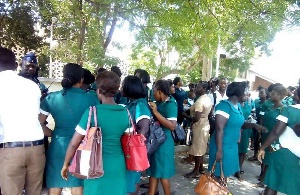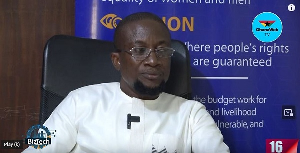A study conducted by the Health Services Workers’ Union (HSWU) has revealed that there are many anomalies in the payment of Social Security and National Insurance Trust (SSNIT) benefits.
Mr Reynolds Ofosu Tenkorang, the General Secretary of HSWU, speaking at the climax of the HSWU Week Celebration in Accra, said the study has revealed that certain illegal factors have been smuggled into the computation of SSNIT under the PNDCL 247 of 1991.
He said the Union, therefore, petitioned SSNIT to produce the legal basis for the deductions and their response rather confirmed their suspicion.
This year’s Week celebration, on the theme; “Tier-2 Pension in the Public Service Reality or Mirage,” was to showcase selected activities performed by the Union in the previous years, achievements as well as challenges and the way forward.
Mr Tenkorang said the theme was chosen because of the myriad of challenges facing the four Public Sector Schemes including non-payment of about 80 months’ contributions of Public Service Workers into the registered schemes by the Government.
He said section 36 (2) of the PNDCL 247 of 1991 states that “Pension shall be based on average annual salary for the three best years of a member during his working life”.
He said looking at the way Public Service Salaries were increased annually, the best three years’ annual salaries should be the three years preceding retirement annual salaries.
“In order to make the member or contributor worse off, SSNIT has deleted the word annual from their documents and rather uses 36 months preceding retirement to constitute three years annual salaries.
“Within that arrangement, a member who retired on 1st April, 2017 for example, will have nine months salaries counted in 2014, four years preceding retirement. This makes the members worse off,” he added.
Mr Tenkorang said incidentally, other pension schemes operating in Ghana like CAP 30, Police Pension and Ghana Universities Staff Superannuation also compute pension based on annual salaries as declared on pay slips and not monthly salaries.
“…another factor used by SSNIT is the Annuity Factor. Annuity is future value of monies paid today. It is another that has been imposed on the payment of lump sum, which cumulatively reduces the lump sum for 12 year period by 41.9 per cent.
“The above local pension schemes also pay 25 per cent lump sum but no annuities are deducted,” he said.
Mr Tenkorang said the imposition of annuities by SSNIT was not in line with the PNDCL 247 of 1991 and that was the major reason why the lump sum paid by SSNIT was always low.
He said another illegality was the Early Retirement Reduction Factor, where 40 per cent reduction would be made on the lump sum for contributors who retired at age 55.
“We agree that Section 34(ii) of the law states that there shall be reduced pension when a member retires from age 55 to 59 years. Yet, there is no Legislative Instrument to make it operational,” he said, adding that the deduction of 40 per cent of lump sum for such contributors was illegal.
Mr Tenkorang said an error in the computation of retiring benefits caused serious stress and shock to the pensioner, adding; “It is, therefore, strange that SSNIT, with all their expensive softwares, still makes mistakes in the computation of benefits”.
He said as a result of the above anomalies, the Union had established a Welfare and Pension Desk to monitor the payments made to its members and anytime they forwarded their petitions to the Director General, as required, the refunds were made to the beneficiaries.
Mr David Tetteh-Amey Abbey, the Deputy Chief Executive Officer of National Pension Regulatory Authority (NPRA), said; “The money is there and it’s a reality that the Public Sector Workers Tier-2 contributions are transferable and we continue to transfer to Tier- 2 schemes”.
He said there were a number of public sector institutions who had not joined any scheme or set up one and their contributions continued to be paid into the Temporal Pension Fund Account (TPFA).
He, therefore, urged such institutions to approach the NPRA and be guided through the process of accessing the benefits that are accruing to their members.
Professor Emmanuel Osei Asiamah, the Chief Executive Officer of Hedge Master Trust Scheme, said until the out of court settlement in February 2016, the Tier 2 pension was apparently a mirage.
Health News of Thursday, 14 September 2017
Source: ghananewsagency.org

















